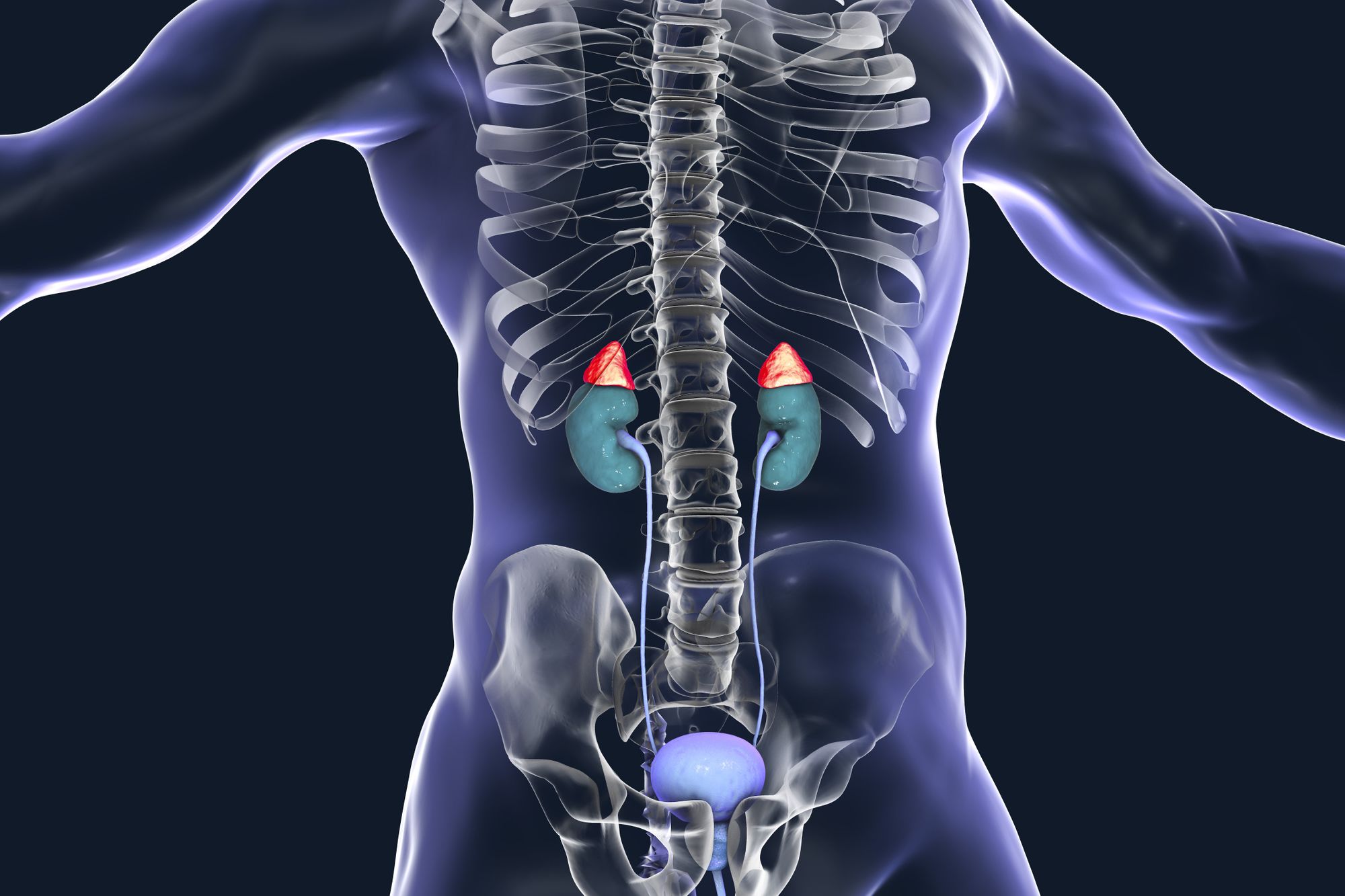CAH Disease Overview
Congenital Adrenal Hyperplasia - also known as CAH disease, is a group of genetic disorders which affect the adrenal glands located on top of both kidneys.
The adrenal glands (or suprarenal glands) are triangular-shaped glands responsible for the production of hormones that help to regulate metabolism, blood pressure, the immune system, response to stress, as well as other vital functions of the body.
CAH disease occurs due to abnormalities in the enzymes that are needed to produce the steroid hormones known as cortisol and in many cases, aldosterone. These abnormalities are caused by genetic mutations, and create shortages of certain enzymes (such as 21-hydroxylase in most cases) which play a vital role in producing these essential hormones. In many CAH patients, these enzyme shortages trigger the adrenal glands to overproduce other hormones called androgens (“male hormones”).
Types Of CAH
CAH disease is divided into two types: Classic CAH (CCAH) and Non-Classic CAH (NCCAH).
Classic CAH Disease
Classic CAH is usually diagnosed during infancy and is the most severe form of CAH.
Children with classic CAH produce little to no cortisol, a life-sustaining hormone that is responsible for regulation of sugar levels in the blood and helps the body to respond to sickness or stress. In addition, some patients are also unable to produce adequate amounts of aldosterone, a hormone that regulates blood pressure and maintains the body’s salt and water balance.
Classic CAH Signs and Symptoms Include:
- Ambiguous genitalia in females (enlargement of the clitoris and/or genitalia that isn’t clearly male or female)
- Inability to produce enough cortisol and in many cases aldosterone (in cases of severe enzyme deficiency, replacement therapy of these hormones must be given for survival after birth)
- Difficulty maintaining normal levels of blood pressure, blood sugar, and overall energy
- Increased vulnerability to stress due to inability to produce more cortisol when needed (i.e. during illness)
- Rapid growth in childhood, although shorter than average height later in life
- Appearance of pubic hair, acne and body odor at an earlier age
- Impaired fertility in both men and women
Classic CAH Disease Diagnosis
Newborn/Infants:
All newborns in the United States are screened for classic 21-hydroxylase deficiency, as it causes the vast majority of cases of classic CAH.
About 75% of children with classic CAH have the salt-wasting form of the disease. These children have little to no enzyme activity and cannot make adequate amounts of cortisol or aldosterone. If not diagnosed at birth, these children are at risk for an ‘adrenal crisis’ during which severe electrolyte abnormalities and low blood pressure develop. If left untreated, shock will ensue, and the condition may be fatal.
Children:
Evaluation is often prompted in older children by the onset of early onset puberty (body hair/odor, acne) and rapid growth. Aside from assessments of hormone levels, X-rays are commonly evaluated in children to determine if bone growth has been affected. Genetic testing may be needed for confirmation of diagnosis.
If your child is diagnosed with classic CAH, your doctor may refer you to a pediatric endocrinologist (a doctor with a specialty in hormonal issues in children) to guide you through treatment options.
Classic CAH Medical Treatment
- Hormone replacement therapy for cortisol, and in many cases, aldosterone is necessary
- Medications called glucocorticoids are needed to replace cortisol, a hormone that is life-sustaining; glucocorticoids are also important to suppress the excess androgens that are produced in this condition.
- Medications called mineralocorticoids are used to replace aldosterone when needed; mineralocorticoids are help keep electrolytes such as sodium and potassium at appropriate levels and are important in maintaining blood pressure
- When someone with classic CAH is sick or experiences trauma, increased dosing of glucocorticoids is needed; this is called ‘stress dosing’ and is required since the body is unable to produce the extra hormones it normally would during stress.
- Women with classic CAH may require higher glucocorticoid doses to become pregnant and preconception counseling is recommended
- Male patients with classic CAH may develop adrenal tissue in their testes (a.k.a. testicular adrenal rest tumors), which can result in infertility; medical treatment includes increased glucocorticoid dosing and surgery may be performed if medical therapy is not successful.
Investigational Therapies and Clinical Trials for Classic CAH
Currently there are no non-steroidal FDA approved treatments that are specifically designed for treating classic CAH. However, there are ongoing clinical trials evaluating investigational drug treatments such as CRF1 receptor antagonists to determine if this class of medications provides clinical benefit to patients with classic CAH. This new class of non-steroidal investigational treatment, which is not yet approved for use, may decrease excess androgen production in patients with classic CAH.
If you or a loved one lives with CAH, you can learn more about joining these late-stage clinical trials including HERE and the Spruce sponsored study: https://www.clarahealth.com/studies/cahmelia
Non-Classic CAH Disease
Non-Classic CAH (also known as Late-Onset CAH) is a more common and less severe form of CAH. Individuals with non-classic CAH have an enzyme deficiency, but it is much less pronounced and they do not require aldosterone replacement. It is generally not identified by neonatal screening. The time of diagnosis varies as it is typically driven by when symptoms develop that prompt medical evaluation.
Symptoms in children may include:
- A rapid rate of growth compared to peers
- Evidence of advanced bone growth on X-ray
- Early onset development of pubic hair (premature pubarche) or other sex specific characteristics that typically are not seen until puberty (such as breast development in females or facial hair in males)
Symptoms in adolescent and adult females may include:
- Irregular menstruation, acne or abnormal hair growth on the face and/or body (hirsutism)
- Difficulties with becoming pregnant
Non-Classic CAH Disease Diagnosis
Blood tests measuring adrenal hormone levels are typically able to diagnose non-classic CAH. However, genetic testing may be needed to provide a definitive diagnosis in some cases. Genetic testing may also be considered during family planning as a substantial portion of individuals with non-classic CAH have a significant genetic mutation.
Non-Classic CAH Medical Treatment
- Children: Glucocorticoid treatment is needed when androgen excess is causing the bones to mature too quickly and could affect adult height.
- Women: Estrogen containing oral contraceptives are typically used for treatment of undesired excess body and/or facial hair and management of menstrual periods; if ineffective or oral contraceptives cannot be used, alternative medications may be needed.
Glucocorticoids may be used in women unable to ovulate when pregnancy is desired; additional medical therapies and procedures are available when glucocorticoid therapy is ineffective. - Men: Treatment with glucocorticoids is only needed if there is evidence of decreased sperm in the setting of desired fertility; however, this is not typical as males affected with non-classic CAH rarely develop adrenal tissue in their testicles that would affect the ability to produce sperm.




